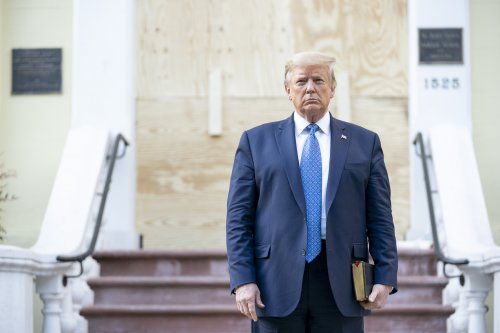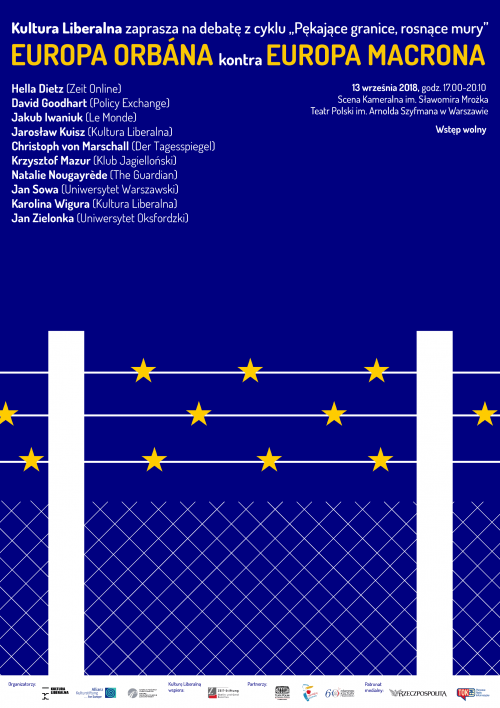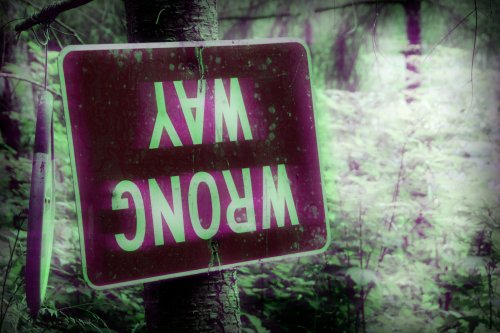Interest in the concept of collective memory tends to grow during extraordinary moments, in times of crisis or change. More “round” dates allow us to reinterpret the past. At times, this is merely a superficial process, a quick and painless “touch up”. At others, changes do demand greater inputs of work, patience and funds. Paraphrasing George Orwell’s “He who controls the past controls the future” – those in charge of the present are also in charge of the past.
Mirosław Hermaszewski, the first ever Pole to be sent into space, in 1978 onboard the spaceship “Sojuz 30”, was to take with him only the barest of essentials: the national flag, the national emblem, insignia of the following: The Polish United Workers’ Party (PZPR), the United National Front, The Polish People’s Army, the Federation of the Socialist Unions of Polish Youth, the Society of Fighters for Freedom and Democracy, the Union of Polish-Soviet Friendship and the Katowice Coal Mine, as well as badges from the VI and VII gathering of the PZPR, photos of Edward Gierek and Leonid Ilyich Brezhnev, samples of soil taken from the battlefields of Grunwald, Lenino and Warsaw, miniature copies of the “Communist Manifesto”, the manifesto of The Polish Committee of National Liberation (PKWN), the Polish constitution, “Pan Tadeusz” by Adam Mickiewicz, a facsimile of the first book of “On the Revolutions of the Heavenly Spheres”, Copernicus’ drawing of the solar system, medals representing the institutions taking part in the research programme of the space flight, various postal stamps and envelopes, a sign taken from the Centre for Children’s Health, and finally an actual map of Poland and the insignia of 49 Polish provinces.
Certainly, today this list can be cause for both ridicule and pity. Three and a half decades ago, the making of such a list was, however, a gravely undertaken decision of great strategic significance. The collection of symbols which accompanied this widely celebrated event had to form a cohesive whole, representing the nation’s priorities. Similar problems now face the organisers of Poland’s contemporary national festivals and celebrations. Who should be remembered? Which historical events should be passed over? Who is worthy of being considered a representative of national heritage? And how best to stage such celebrations?
COLLECTIVE NATIONAL THERAPY
The celebrating of the past has something of both carnival and mourning to it. According to many anthropologists, the two concepts do not differ much. In both cases – specific to the lives of collectives – social order is reversed. Time-space opens up, the border between the worlds of the living and the dead vanishes. Time grows old, dying in ritual fashion, then returns – and with it the need to reflect upon that which has passed. At carnival time, it is sadness which becomes taboo, while during the grieving process – so do celebrations. The cheering on of more “round anniversaries” exemplify the fusion of comedy and tragedy, in a word – the grotesque and tragi-farcical form which is associated with the carnivals of Polish remembrance.
In our days of modernity, consumers should be treated like sick children. One has to look after and entertain them, protect them from the world’s evils, and best to shield them from even seeing anything untoward, to feed them positive symbols and convince them of impending salvation, or at least self-fulfilment. In 2014, we had the chance to witness such phenomena during the round anniversary celebrations of two, wildly differing, historical events – the Warsaw Uprising of 1944 and the June Elections of 1989.
THE YOUNG INSURGENT SET
For the past few years, the myth of the Warsaw Uprising has been clothed in ever more cheap wrapping (as far as adults are concerned). Parents only need to cough up some cash and the celebrations of this tragic event can begin in earnest. Young Poles can then get busy building mock barricades and ruins, plastic flames bursting out of toy windows. The ruined houses stand and watch as a replica Volkswagen Kübelwagen rolls on by – although experts in military vehicles complain its chassis is a mite too wide. Behind the wheel, a toy Nazi holding a minute Schmeisser machine gun – oh dear, the German appears to be smiling! Much like a second Nazi, racing along a nearby barricade. It would seem the insurgent perched among the ruins has a different expression, more melancholy. A pair of glasses are painted onto his plastic face – evidently, he must be a member of the heroic city intelligentsia. And yet… he too seems to be smiling! It’s hard to tell – the toy face exhibits a stylish bit of stubble. We can, however, say for sure that the second insurgent defending the barricade is grinning ear to ear. All in all – war games in full swing, at least for four and five year olds, as promised by the makers of these toys. Older kids can spend the dark day of 1st of August killing Nazis, if they have purchased a copy of Enemy Front for their console or PC. A classic shoot-em-up, its main protagonist Robert Hawkins is an American war correspondent (the Western press, as we can see, is always on our side!). Violence, atrocities, massacres on the streets of Warsaw, the product aimed at 18+ year-olds. Turning on our gaming hardware, let us hum softly the old, forbidden songs of the Resistance – although in new, freshly re-recorded rap-metal versions. And the best kit to don while singing these old time classics is patriotic fashions – for example, an Uprising-themed t-shirt, with a print of a bullet hole and dried blood already in place. Supplies can be easily purchased, prior to setting off for our virtual battles, on internet auction sites aimed at those who re-enact battles and fans of city-based games.
Right before our eyes, tragedy becomes farce. The remembrance of a city’s extermination has been forced from collective memory by consumerist cultural artefacts – toys, games, pseudo-Hollywood movies. What is interesting, celebrations of the June 1989 Elections are undergoing a similar process – reaching the rank, just below the Uprising, of the most important event of the past few decades.
STAGING THE PAST
The partially free parliamentary elections of 1989 have been mythologised – having become signs of a historical anchor which secures national identity. The 2014 celebrations’ myth of the founding of the new order were dressed up in richly-wrought grab, indulgent in places. The centre of this cult of remembering was Warsaw. Between the 3rd and the 5th of June, politicians moved swiftly along the Royal Route, between Parliament, Namiestnik Palace, the Royal Castle and the Archicathedral. Members of the National Assembly (Zgromadzenie Narodowe) forgot for just a moment about the bickering which normally fills our Parliament building. The president issued medals to the heroes who are now part of the transformation pantheon, while also planting “oaks of freedom” in a local park. He even managed to rename the main transport artery linking Poland with the West “The Highway of Freedom”.
Churches held mass for liberty, the smell of incense hanging over Warsaw’s Old Town. Nearby squares were filled with youths taking part in games celebrating the spirit of the Transformation. It was even possible, according to the local History Meeting House (Dom Spotkań z Historią), to “turn the system off” all by yourself. After all, Poles – even the young ones – can do it! In this game, linking improvised theatre, a strategy and a puzzle game, children could learn about the places connected with the end of communism and the start of the Third Polish Republic. There were also comic book drawing workshops, exhibitions, video installations, radio broadcasts, films and advertisements – all of it set in the traditional Solidarity font – solidaryca – and illustrated with the iconic image of Gary Cooper (from High Noon). All in all, a total “we are defeating communism” extravaganza.
Adults couldn’t complain about lack of provision either. In twenty five of Poland’s biggest towns, symbolic domains were erected – the Urns of Freedom. The containers were open to all sorts of paper gifts – anonymous wishes, comments and the like. The unusual format of writing supplications to the highest authorities failed to prover popular, however. Meanwhile, joggers could take part in marathons, while coin collectors were offered the special “25 years of freedom” 5 zloty. Among all the different products available for purchase, there was even room for a specially themed Coke bottle.
Is this the best way of communicating collective values to the Polish nation? How best to annually get them to repent, to fall for, to sell out to? Well, this last action is at least straightforward: buy into all this enthusiasm, regardless of whether we are dealing with the tragedy of the Uprising or a set of elections which continue to divide public opinion. What we get is events of massive national and historical importance becoming mass culture produce, sold at half price or less during anniversary sales.
THE ILLUSION OF UNIQUENESS
The battle over Poles’ collective memory goes on, being waged by the Left against the Right, both in various shades. The prize is the chance to gain the status of hero, or else martyr, as well as the right to call one’s opponent a “traitor” to the national cause or simply – a loser. Ideological divisions do not, however, reappear in the means used to conduct the politics of history. The sanity of celebrating key anniversaries becomes crushed beneath the twin burdens of carnival and mourning. The opposition resorts to a similar method of popularising anniversaries – by simplifying their meaning, commodifying it, while at the same time attempting to discredit the competing set of special dates. This is a road to nowhere. An infantile form of patriotism set against the criticisms of the opposition is as helpless as a baby. The development of a liberal model of remembrance which will not be banal is not an easy task. Yet emotions in politics cannot be left to the radicals who introduce simple templates of tribal divisions into the public sphere. Emotional blackmail strips us of any sort of chance for a peaceful discussion of how our freedoms came to be. Knowledge is eroded, leaving behind nothing but toys.
And the threats are easy to see. Kitsch becomes a weapon in the war over political influence, diluting the meaning of both success and failure. In the noisy crowd of pop-cultural references it is easy to achieve unintentional profanation or sacralisation of the events of both 1944 and 1989.
And the question begs to be asked: in time, will our children and grandchildren not look back at the 2014 festivals of remembrance much like we do with the space trip luggage list of cosmonaut Hermaszewski – with ironic ridicule?
This article is a part of Kultura Liberalna’s book “To place Poland in the centre”. See the table of contents here.




